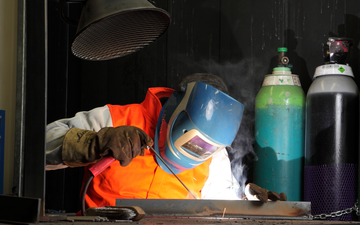- Official BOC UK Online | Industrial Gases | Products & Solutions | BOConline UK
-
Shop
- Industries
- Processes
- Gases & Equipment
-
Solutions
-
Services
-
Health & Safety
-
Contact & Support
- What's Happening
-
Net Zero Strategies
Upskilling your Welders? How to get Traction on the Shop Floor
Posted by BOC

The clock is ticking for many welding companies, facing a ‘perfect storm’ of skills issues.
Your skilled workforce is ageing each day. Who will replace them? At the same time, the welders you employ need continuous training in new processes and technologies to keep their skills up-to-date.
Apprentices provide a structured solution to your first problem. But, in many ways, addressing the second challenge of up skilling current staff is more difficult. Good apprentices are hungry for knowledge. Some of your experienced workers may be less eager to learn if it means changing tried and tested methods.
So what are the key steps to getting staff buy-in to process change?
Listen to your team to learn about potential barriers
If you face initial inertia or resistance, accept that it’s a common and natural reaction to change. Apprentices have everything to gain from learning new skills. Some skilled workers may worry about what they believe they could lose. Overtime, for a start, if the new process increases efficiencies. Also status, as the way they are perceived and treated by colleagues may partly be based on a particular skill set. Encourage your staff to voice their concerns and offer them reassurance. Listen without feeling the need to provide a counter-argument.
Choose the right people
Use your knowledge of your workforce to make careful choices about the key players in any change process. It can be good to start with a pilot project, championed by a team leader and involving staff you know to be careful and methodical welders. The team leader is more likely to see the wider business benefits and share them with the team, while the welders will persevere to achieve the improved results you desire. This way the shop floor will see, rather than just be told, why the process change is necessary and beneficial.
Sell the benefits of improving welding skills
No one introduces change just for the fun of it. It’s easy to lose sight of the potential company benefits of a process change when dealing with grass roots challenges. Explain how it can increase job security through making the company more efficient and competitive. It could also open up potential new markets that require the new skills your team are learning. Use concrete examples and real figures to make your point.
Set benchmarks and share results
Establish and promote project goals from the outset. Focus on ‘low hanging fruit’, objectives that are easier to achieve and have a tangible benefit. Share any success across the shop floor, explaining how it benefits the company and so, in turn, the individual.
Provide time and support
If you ask craftsmen to change ingrained and trusted methods, remove any expectation that they should ‘pick up’ this new skill quickly. Ask a golfer if it’s easier to learn their golf swing as a novice than completely change it as a professional. Your welders could be frustrated if initially, the new procedure takes longer. Give them a sense that this is normal and not a problem. Also, make use of any available training and support, for example from your welding gas supplier if you are using new shielding gases. Finally, provide praise when appropriate. It tends to help, whether your worker is 16 or 60.
Introducing change is more about the people than the technology. It can be a challenge but, if carried out successfully, it can provide benefits to your company well beyond the process change itself.
This blog is part of the Welder’s Toolkit: whether you need welding tips, gases advice or safety guidance, you’ll find it in the toolkit! For more welding advice, visit BOConline.co.uk/welders-toolkit.

